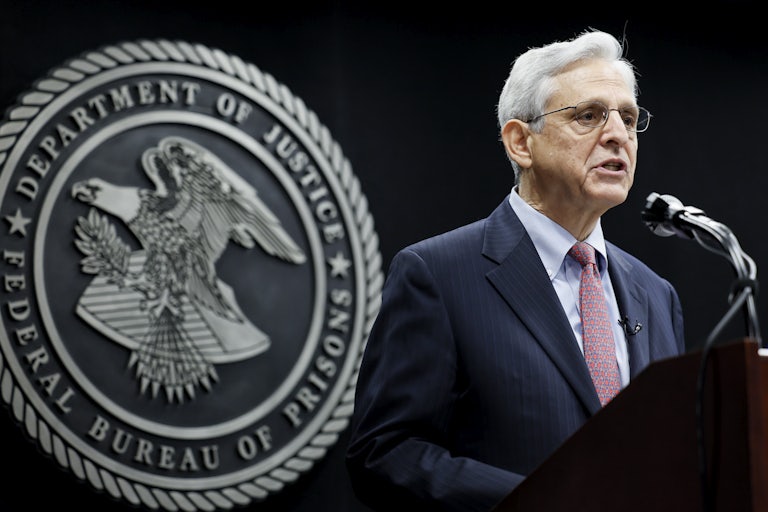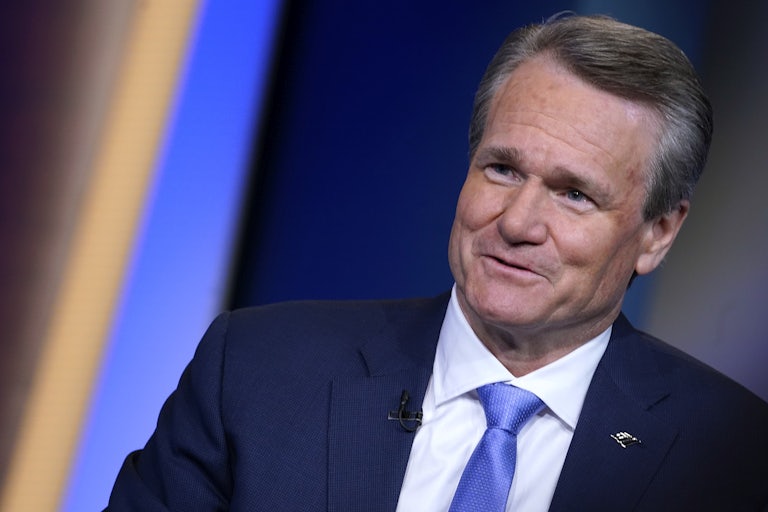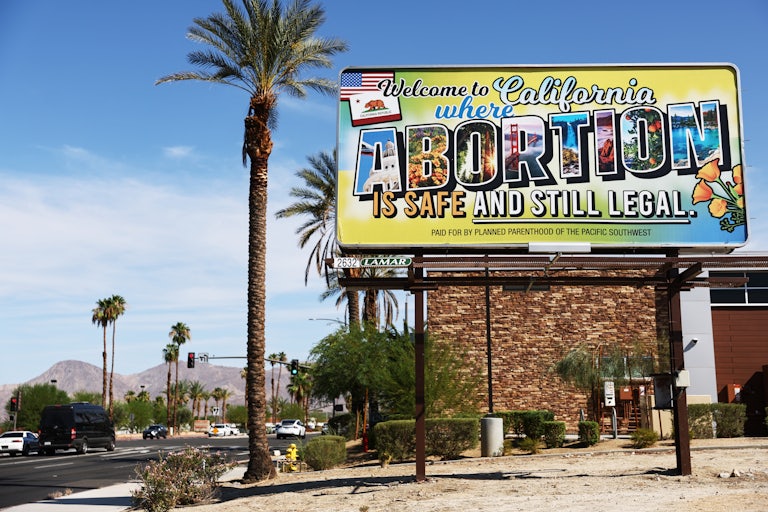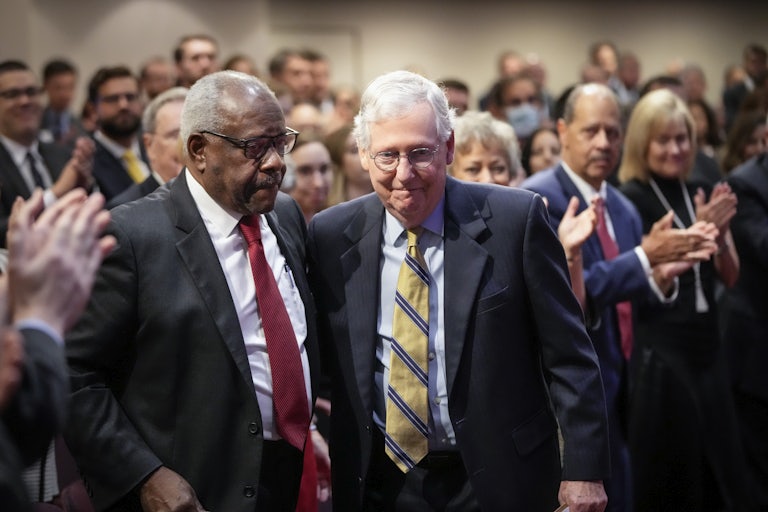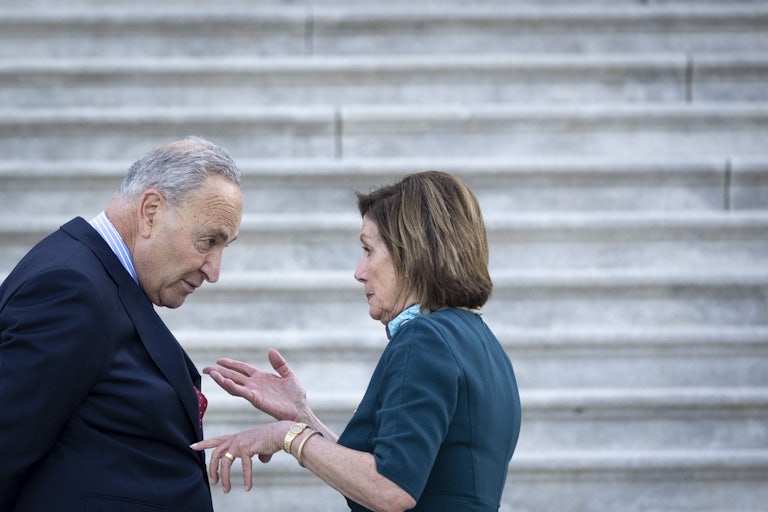The Democrats’ Case for Reelection: Order Over Chaos
The biggest contrast the Democrats can draw over the next two years is that while they have passed a slew of major legislation, the Republicans have further descended into mayhem.

As I noted last week, the FBI’s raid of Donald Trump’s Florida redoubt spurred Trump’s defenders into a frenzy of hot anger, the onrush of which, as my colleague Matt Ford noted, may have been a wee bit premature, given the revelations that quickly emerged. But the reaction has been just as exuberant from the left. Merrick Garland, who’d up until then been a fixture of impatience and discontent among liberals hoping he’d apply a more Javert-like zeal to his pursuit of Trump, was suddenly an unlikely meme hero. After an interminable wait for the Justice Department to put Trump in a legal bind, Dark Merrick had finally did it on’ em.
But while the outpouring online is understandable, I’d urge Garland’s newfound fan base to follow his lead. As I previously noted, the straitlaced, even dull, persona he’s created for himself hasn’t lent itself to spectacle or emotional catharsis. But it’s been a great tone for the leader of an agency in bad need of a restoration to set. This is an excellent opportunity to embrace the Garlandian virtues of dull normalcy. Between now and the next presidential election, Democrats should do whatever they can to Make America Bored Again. What was the point of a Biden administration, anyway, if not the total assertion of a dull, normie, incremental political aesthetic as one of the better alternatives to four incompetent and cruel years under Trump?
Order is not something that Biden has always successfully established or maintained: His withdrawal from Afghanistan was more haphazard than it should have been; the road out of the pandemic has been and continues to be rocky. In recent weeks, however, Biden’s manifested a more serene vibe: His party, at long last, came together to pass a legislative agenda after a year of discord. The Inflation Reduction Act may be the balm for what’s ailed a fractious party that sparred over the Build Back Better Act.
Compared to Build Back Better’s top lines, the IRA looks like a picture of moderation. But as TNR’s Michael Tomasky notes, it’s also quietly revolutionary at its core. Newly signed into law, the IRA “begins to turn 40 years of bad economic conventional wisdom on its head by asserting that the government has a role in structuring markets, promoting growth, and guiding industrial policy,” Tomasky writes. The ship of state is being gently steered into better waters; those Democrats who fought for better and more generous policies now have a much firmer foundation from which to make new demands as a result. Coupled with Biden’s throwback views of the labor market, this means Democrats now look like a more cohesive and united party, and they’ll be able to campaign on an economic message with real possibilities.
Meanwhile, the GOP has embraced an all-havoc, all-the-time platform. Post-Roe America is turning out to be a nightmare in all the ways that liberals warned. Political violence is becoming more prevalent and more obviously a product of right-wing ideology. GOP candidates are growing stranger and more alien by the day. Conservatives are banning books and threatening children’s hospitals. And the party of Lincoln has torn down its monuments to the sixteenth president and erected busts of Hungarian autocrat Viktor Orbán in their place. Stem to stern, the GOP is sailing with a full complement of unreconstructed chaos agents.
Naturally, one of the ideas that those chaos agents are raising right now, as the investigations into the former president’s dealings advance on multiple fronts, is that the very act of bringing Trump to justice could plunge the country into turmoil. It’s an argument that Trump, in particular, hopes will be convincing, if only to save his own skin. And as The Washington Post’s Paul Waldman and Greg Sargent report, it’s also an argument that’s finding some purchase in the discourse, as media elites wonder if Garland shouldn’t try to tamp down the tense situation.
But as Sargent points out, those tensions exist only because of “GOP demagoguery,” and it’s not Garland’s “job to shape the legal response around GOP noisemaking.” Besides, the long-term chaos caused by creating a culture in which no one is held accountable outstrips the short-run chaos of a news cycle in which the dumbest pundits in the land demonstrate how susceptible they are to right-wing propaganda.
Democrats have the opportunity to draw an important contrast to the Republican vision of America, and the calm sobriety that Garland has recently projected is a model for Democrats to follow. Not long ago, I proposed that Democrats should promise voters that they’ll fight for the Good Life—a pledge to deliver more shared prosperity, more widely distributed political power, more political stability, all to allow all Americans to have more time to spend with the people they love. Chaos is the enemy of this agenda. This is a ripe time for Democrats to make a big bet that there are more people out there who want a calm and prosperous country instead of an unruly one.

